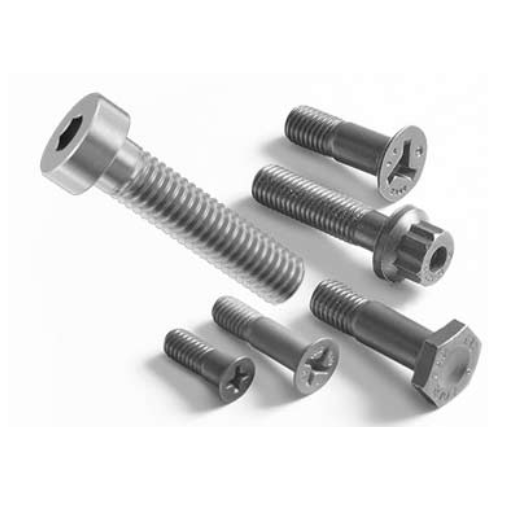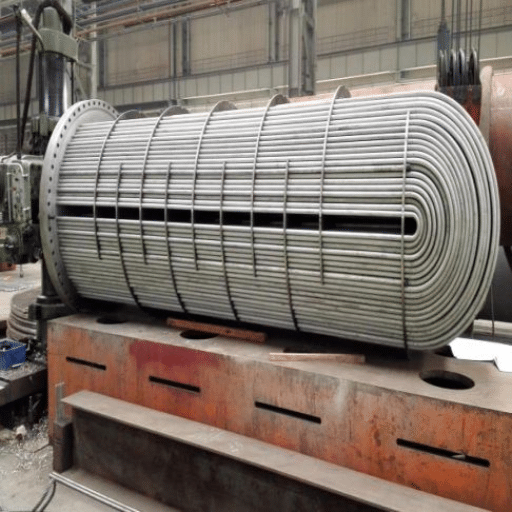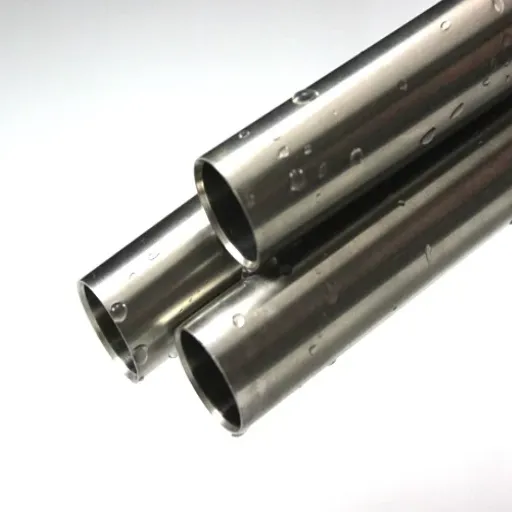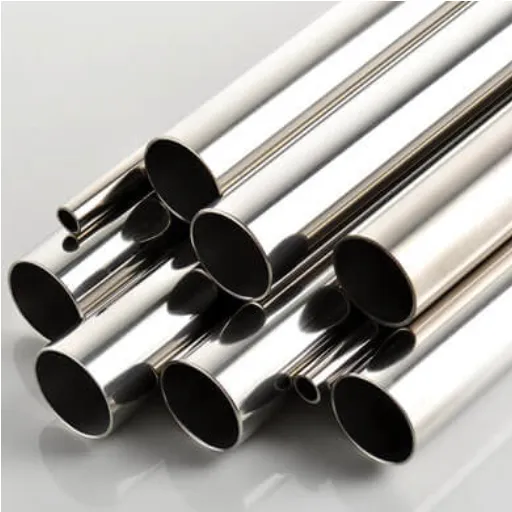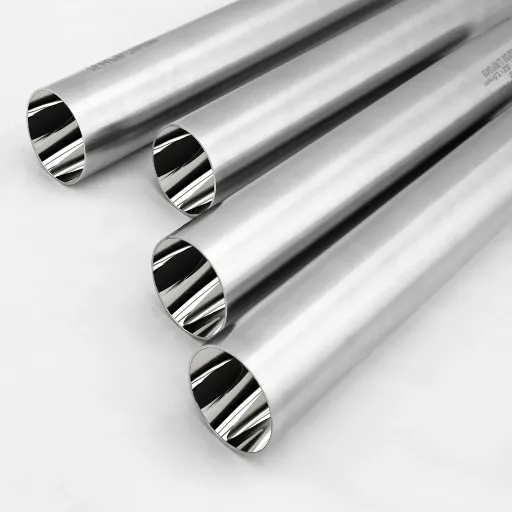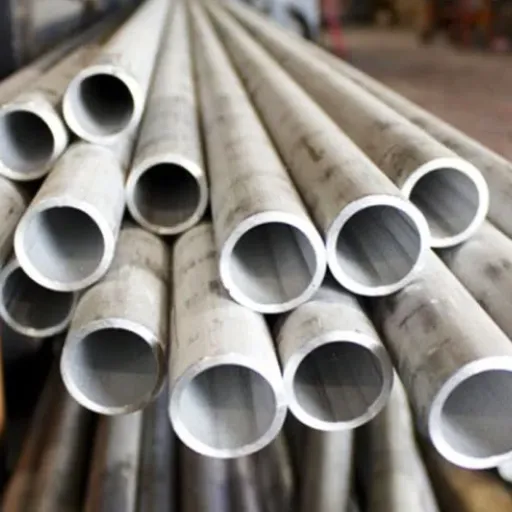When it comes to critical applications that demand unmatched strength, durability, and resistance to extreme conditions, A286 bolts stand in a category of their own. Engineered from an iron-based superalloy, these high-performance fasteners are specifically designed to withstand high temperatures, corrosion, and intense stress, making them an essential component in industries such as aerospace, automotive, and power generation. This article will take a deep dive into the unique properties, benefits, and diverse applications of A286 bolts, helping you understand why they are the go-to choice for engineers and manufacturers tackling the most demanding projects. Whether you’re looking to ensure structural integrity or optimize operational efficiency, you’ll soon discover why A286 bolts are indispensable for modern engineering challenges.
What Makes A286 Bolts Unique?
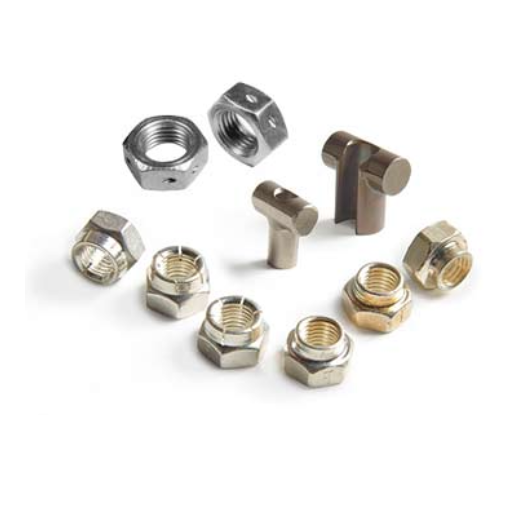
Understanding the Material Composition of A286
Design-wise, the material composition in A286 bolts intends to yield great tensile strength with corrosion resistance and high-temperature performance. A286 is a precipitation-hardening alloy with iron serving as its major component. Nickel and chromium are the main alloying elements present in A286. Nickel increases the strength and corrosion resistance of the alloy, while chromium resists oxidation well, giving it the best resistance to oxidation at high temperatures.
Other elements like molybdenum and titanium help increase the creep strength of the material and improve overall durability in harsh conditions. Molybdenum improves the material’s resistance to stress in long durations at higher temperatures, while titanium is vital to precipitation hardening, which contributes to the alloy’s strength. These characteristics make A286 bolts a prominent choice in severe applications.
Such composition gives greater strength to A286 bolts, allowing them to maintain structural integrity at extreme conditions during working, such as in aerospace, automotive, and power generation industries. This rare mix of characteristics allows A286 bolts to exhibit high tensile strength with oxidative resistance and reliability even far above 1,200°F. Hence, the material composition is a key player dictating the popularity of A286 bolts among industries purchasing high-performance fasteners.
Exploring the Mechanical Properties of A286 Bolts
ISO A286 bolts are known for being of quite strong mechanical properties. This strength allows the bolts to be deformed under load. Depending on the stand, the A286 bolts may have tensile strength of more than 130 ksi (kilopounds per square inch) when solution-treated and aged. The bolts will take considerable amounts of stress without deformation under extreme mechanical loads to maintain structural integrity.
Meanwhile, the other mechanical property of A286 bolts is creep resistance. A286 bolts normally imply creep resistance when deformed slowly by constant stress, especially at elevated temperature. The alloy’s quick microstructural stabilization creates lower creep rates for A286 bolts. These bolts are dimensionally stable for more extended periods, even in an environment where temperatures are beyond 1,200°F. This feature offers viability in the aerospace and power generation industries, where long-term reliability under thermal stress is the key concern.
In addition, A286 shows very high resistance against fatigue. This enhanced the performance of A286 under dynamic loads or during cyclic loading. Generally, repeated stress cycles lead a material to fatigue; however, the high nickel content of the alloy, with other alloying elements like titanium and molybdenum, offers good resistance against crack initiation and propagation. These properties of the bolts find them being used in places where vibration, thermal expansion, and contraction are common, thus providing assurance for durability in tough applications. The mechanical properties exhibit why the A286 bolts find a very wide application in critical applications needing long-term dependability.
The Role of A286 Stainless Steel in Aerospace Applications
The availability of an A286 steel-grade stainless into, with highly mechanical, high-temperature, and antimicrobial characteristics, speaks of its indispensability to aerospace engineering. As regards superalloy classification, it is a member meant to be reliably functional under extremely adverse environmental conditions encountered in aerospace applications. Hence, it might operate up to temperatures of about 1300°F (704°C) without losing its structural stability or undergoing deformation even under thermal stress for fairly long durations.
It finds very good application in jet engine parts, such as turbine wheels, blades, and afterburners, where superior fatigue resistance and oxidation protection are required. Further, the precipitation hardening mechanism in the A286 promotes tensile strength without compromising on ductility, which is much required for stress application under cyclical stresses during flight phases. The corrosion resistance of these parts ensures that they perform over a long period of time with minimal maintenance when exposed to varying atmospheric conditions and moisture.
Moreover, A286 bolts and fasteners find wide application in aerospace assemblies where safety and reliability are critical. These fasteners provide precision-engineered solutions to safeguard critical joints from all failure mechanisms induced by vibration and temperature variations so that the integrity of really critical structures, such as airframes and engine mounts, remains unquestioned. The spirited properties of this material make the A286 stainless steel a perfect fit and hence a prime option for high-performance applications subjected to stringent certification criteria within the aerospace industry.
How Are A286 Stainless Steel Fasteners Manufactured?
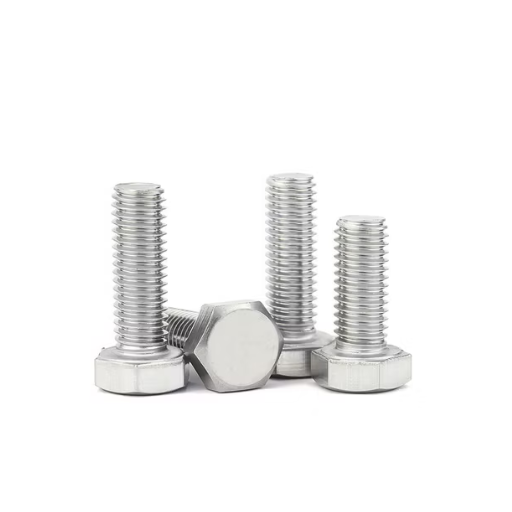
The Manufacturing Process of A286 Bolts
A286 stainless steel bolt manufacturing is highly controlled, with precise standards. This process entails the selection, formulation, and melting of A286 steel, an iron-based superalloy consisting of iron, nickel, chromium, molybdenum, and titanium, among other elements. The alloy in its raw state is melted and refined by superior methods such as vacuum induction melting (VIM) and vacuum arc remelting (VAR), thereby guaranteeing the best purity and uniformity of its material, which is of critical importance for properties under high temperature and stress.
After initial preparation of these raw materials, they are forged or hot-rolled at temperatures above 1800°F (982°C) to produce bolt blanks. During this operation, the forming of the basic shape for these fasteners is carried out along with the improvement of the alloy’s grain structure, which fortifies its mechanical strength and resistance to stress corrosion cracking. The CNC machining process continues with exact dimensions and threading specifications according to standards such as the ASME or ISO, and tolerances are maintained throughout so that the bolts fit perfectly and behave predictably in demanding applications.
The bolts shall then be heat-treated, usually including solution annealing and then aging. Solution annealing is carried out at 1550–1600°F (843–871°C) to dissolve carbides and enhance ductility; this then forms precipitates in the subsequent age-hardening process, thereby increasing the hardness, resistance to creep, and overall mechanical properties of the alloy. This property combination ensures that the bolts will remain functional throughout severe thermal cycling and mechanical loading.
Surface treatment to increase corrosion resistance and to achieve longer service life comes next, which could be followed by passivation or coating. Upon the conclusion of surface treatment, numerous quality control tests shall be performed, including ultrasonic inspections, tensile strength tests, and microscopic tests, to assure the structural integrity of each bolt and its adherence to aerospace or industrial requirements. In each step of these processes are aspects that will guarantee that the A286 stainless steel bolts become an enduring solution for use in the most demanding industries such as aerospace, power generation, and chemical processing.
Ensuring Quality and Specification Standards
Producing bolts of A286 stainless steel involves the highest standards in the industry, including AMS 5731, AMS 5732, and ASTM A453. Such thoroughness extends to each stage of manufacture and includes quality-control applications that comply with very stringent operational requirements, holding steel bolts to aerospace-grade scrutiny. For example, the material would be evaluated alongside surface polishing via non-destructive methodologies, allowing any surface or subsurface defects to be uncovered without harming the steel. We follow that up with ultrasonic inspection to identify any internal discontinuities in very fine detail, allowing for the fabrication of flawless components.
Moreover, in the laboratory environment, methods for determining the mechanical properties of the bolt specimen include tensile strength, yield strength, and elongation. These measurements further ascertain that the bolt exhibits the required high-temperature properties combined with corrosion resistance under an aerospace environment and power generation scenario. Use of microscopic analysis is an additional complement to the process, helping double-check the grain structure of the material and ascertain inclusions or impurities in the material that will otherwise affect operational reliability.
With such quality assurance procedures at the preeminent level, every batch produced is in exact alignment with the requirements stated. Cutting-edge inspection techniques coupled with international standards of inspection keep A286 bolts, without fail, a steadfast choice for applications challenged with extreme stress, temperature, and environmental conditions.
Why Custom Manufacture is Essential for Specific Requirements
Custom manufacturing processes play an essential role in applications requiring strict adherence to a specific set of requirements, whereby standard parts cannot satisfy the operational objectives. Common spheres that deal with parts requiring extreme conditions under high pressure, temperature variations, or corrosive environments include aerospace, energy, and defense. Custom manufacturing works for such situations by enabling engineers to conceive of parts that fit the given tolerance, material specifications, and mechanical properties.
Utilizing high-end and advanced technologies such as CNC machining, additive manufacturing, and precision forging, manufacturers can adapt parts of highly complex geometry or harsh materials like nickel-based superalloys to their needs. For instance, a custom bolt made of A286 may be fabricated to meet performance requirements to such an extent that it matches the stressors and environmental demands relevant to its application. Furthermore, testing and inspection at every stage during the production it ensure that the product is both reliable and has a long life.
In other words, this gives one a competitive advantage as custom manufacturing mitigates the premature failure that usually comes as a result of either component mismatches or the wrong choice of materials. Bespoke solutions in tune with modern engineering practices provide a solution to the exacting demands of contemporary industrial activities, thus enhancing safety while optimizing overall operational efficiency.
Where Can I Find A286 Hex Head Bolts in Stock?
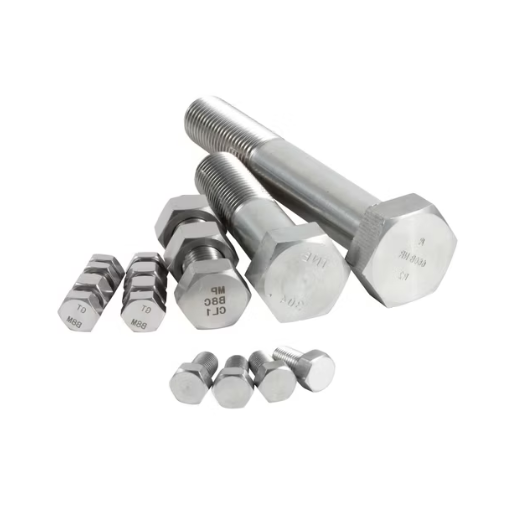
Understanding Industry Requirements and Stock Availability
In aerospace, automotive, and energy industries, where materials are required to endure extreme environments, A286 hex head bolts are components of paramount importance. These bolts are highly valued for their strength, oxidation resistance, and mechanical integrity at high temperatures. Because of their superlative performance characteristics, specification drawings within the industry tend to call for these bolts in applications such as jet engines, gas turbines, and high-performance exhaust systems.
The ranges of stocks of A286 hex-head bolts change depending on the difficulty of procuring various materials, production lead times, periods of high and low demand in specific regions, and so forth. Key suppliers tend to keep allocating stocks for Original Equipment Manufacturers (OEMs) and maintenance operations in general. Specialized distributors may offer options for custom dimensions, coatings, or even certifications to fulfill industry standards with the utmost rigor, such as ASTM or AMS specifications.
A network of suppliers that account for real-time stock levels can greatly expedite on-demand procurement, thereby minimizing downtime. Through the use of digital tools and supplier platforms, companies are being exposed not only to stock availability but also technical specifications and shipping logistics, which enables them to pick suppliers that are able to quickly fulfill their needs and meet project deadlines. In addition, select suppliers that have been around for quite a while and have a reputation for quality assurance to examine, would surely verify the authenticity of the product and proper adherence to industry requirements.
How to Get a Quote for A286 Fasteners
To obtain the best possible and detailed quotation for A286 fasteners, it is important to work up the specifications and requirements before calling one supplier or another. Starting from the most important attributes that include size, thread type, and material grade, with a possibility that some secondary finishing or coating will apply to the end use, will be useful. Clarity will also be needed on the quantity needed, delivery time, and any certification requirements like ASME, ISO, or other vendor-recognized industry standards relevant to your operational requirements.
Once finalized, search for reputable suppliers that specialize in high-temperature, high-strength alloys. Most suppliers nowadays provide online quote request forms wherein you can upload technical drawings or detailed purchase specs, or they can be contacted directly by calling their sales departments for more personalized assistance. These suppliers should also allow you a free and open verification concerning the material origin traceability and quality test methods they use, for example, tensile strength test methods, thereby assuring you that their products meet the industry standards for quality.
To expedite the comparison process, purchasing officers tend to request quotes from different vendors and take into account not only price but also logistical arrangements, such as lead times and shipping options. Using vendor platforms or procurement software with integrated analytics can also help decision-makers by gathering data on costs, availability, and vendor performance.
What are the Technical Specifications of A286 Fasteners?
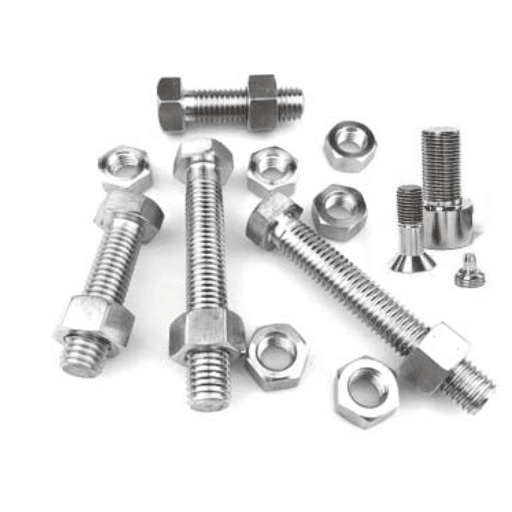
Understanding Yield Strength and Tensile Properties
The technical specifications of A286 fasteners are studied mainly for the application of their yield strength and tensile properties, as these characteristics guarantee their successful application in a hostile environment. Yield strength is the maximum allowable stress on the material before the onset of permanent or plastic deformation, and thus sustains the fastener under load application. However, A286 fasteners are manufactured to retain consistent performance in this aspect, attributed to their higher alloy content.
Conversely, tensile strength defines the utmost stress a fastener may withstand just before it breaks. This property is an indicator of the material’s competence to resist elongation or rupture under extreme tension. A286 fasteners are best known to exhibit ideal tensile strength and thus suit high-temperature and high-pressure environments, such as in aerospace and industrial gas-turbine operation.
Through precision testing and certification, retracing mechanical-property standards for the material ensures reliability. Knowing these technical details enables one to determine whether A286 fasteners would be an optimum choice for applications that require durability and resistance against environmental factors.
Exploring High Temperature and Corrosion Resistance
Set a high standard in materials engineering, the A286 fasteners are acclaimed for their exemplary performance under higher temperatures and corrosive environments. The fasteners maintain their mechanical strength and morpho-dimensional stability up to an approximate temperature of 1300°F (704°C) and under thermal and oxidative stresses. It was said that these fasteners have an outstanding resistance to oxidation and creep. This was imparted by their chromium and nickel-rich composition, which is highly beneficial in aerospace and turbine applications where thermal cycling is commonplace.
The A286 fasteners, along with another type of corrosion, are excellent corrosion-resistant fasteners, particularly in the presence of moisture or a marine atmosphere. This property is credited to molybdenum, which improves the corrosion performance of the alloy against pitting and crevice corrosion. Test data also show that, subject to harsh conditions, A286 alloys perform consistently well, lessening the chances of failures due to environmental degradations despite long-term exposure.
Armed with such high-temperature and anti-corrosion properties, A286 fasteners are thus placed alongside the finest materials for applications that require material integrity, toughness, and a long service life. It makes these fasteners a necessity for sectors that rely on critical reliability under extreme operational conditions.
Why Choose A286 Hex Bolts for Your Next Project?
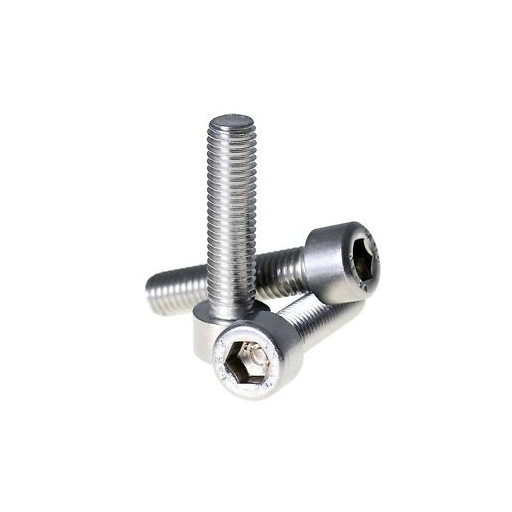
Comparing A286 to Other Alloys
Comparison of A286 is made with other alloys, namely 17-4 PH, Inconel 718, 316 Stainless Steel, and 15-5 PH, for properties like strength, temperature resistance, corrosion resistance, and machinability.
| Aspect | A286 | 17-4 PH | Inconel 718 | 316 SS | 15-5 PH |
|---|---|---|---|---|---|
|
Durability |
High |
Higher |
Very High |
Moderate |
High |
|
Heat Tolerance |
Up to 1300°F |
Moderate |
Ultra-High |
Up to 800°F |
Moderate |
|
Resistance |
Excellent |
Moderate |
Excellent |
Good |
Moderate |
|
Workability |
Moderate |
Easier |
Difficult |
Easier |
Easier |
|
Expense |
Moderate-High |
Moderate |
High |
Low |
Moderate |
The Advantages of Using A286 Stainless Steel Bolts
- High-Temperature Resistance
A286 stainless steel bolts can withstand very high temperatures and retain their strength and working ability for temperatures up to 1300°F (704°C). Hence, it is used for aerospace, turbine, and engine applications where the bolt functions under intense heat for the entire duration of the application.
- Extraordinary Corrosion Resistance
The chromium-nickel-molybdenum constitution of A286 stainless steel allows it to withstand oxidation and corrosion, even under stringent environmental conditions. Hence, these bolts are suitable for seawater applications, chemical processing plants, and areas exposed to corrosive substances.
- Higher Mechanical Strength
These A286 bolts have very high tensile and yield strengths and perform consistently under heavy loads. With tensile strengths ranging from 130,000 psi to 160,000 psi, these fasteners endure very high stress without deformation or failure, thus providing certainty in competitive applications.
- Better Lifetime
Metallurgical considerations make the alloy resist wear and fatigue, leading to a longer working life. A286 bolts maintain their integrity through years of operations and hence reduce the need for maintenance and contribute to the cost efficiency of projects with longer time horizons.
- Easy Fabrication and Universal Application
Despite their strength and durability, A286 stainless steel bolts remain fairly easy to fabricate, including forming, machining, and welding. Hence, this versatility increases their applicability across aerospace, automotive, and petrochemical industry sectors where custom components are often required.
These qualities mark the fasteners as a safe choice in critical projects that call for higher yield and longer life.
References
-
Electrodeposition of Aluminum on a CRES A286 Substrate from Ionic Liquids – Discusses corrosion and coating properties of A286 bolts.
-
LDEF Mechanical Systems – Explores the use of A286 bolts in aerospace applications, including metallographic analysis.
-
Stress Relaxation of High Strength A-286 Bolts in Simulated Storage – Examines the stress relaxation behavior of A286 bolts in engineering applications.
Frequently Asked Questions (FAQ)
Q: What are A286 bolts, and why are they considered high-strength fasteners?
A: A286 bolts are made from an iron-nickel-chromium alloy known as Alloy A286. They are known for their high strength and excellent corrosion resistance, making them ideal for high-temperature applications. These fasteners maintain their strength at high temperatures, which is essential for various industrial applications.
Q: What types of A286 fasteners are typically available in stock?
A: Common A286 fasteners in stock include screws and bolts, socket head cap screws, and a286 nuts. These fasteners are available in various sizes to meet specific project requirements and are part of a comprehensive catalog offered by manufacturers.
Q: How does the strength of A286 bolts compare to other fasteners?
A: A286 bolts offer exceptional strength at high temperatures compared to many other fasteners. They are designed to withstand extreme conditions, and their high strength makes them suitable for demanding applications, such as aerospace and power generation.
Q: Are there metric sizes available for A286 screws and bolts?
A: Yes, A286 screws and bolts are available in both imperial and metric sizes. This ensures compatibility with international standards and allows for easy integration into various systems and assemblies.
Q: How do A286 socket head cap screws differ from standard screws?
A: A286 socket head cap screws are designed for applications where maximum strength and a flush surface are required. They feature a cylindrical head and internal wrenching capability, making them ideal for high-strength and precision applications.
Q: What standards do A286 fasteners adhere to?
A: A286 fasteners typically adhere to ASTM standards, ensuring that they meet stringent quality and performance criteria. This ensures that users receive reliable and consistent products suitable for critical applications.
Q: Can A286 bolts and nuts be used in environments with high temperatures?
A: Yes, A286 bolts and nuts are specifically designed for high-temperature applications. Their ability to maintain strength and resist corrosion in extreme temperatures makes them a preferred choice for industries such as aerospace and automotive.
Q: Who are the typical manufacturers of A286 fasteners?
A: Several manufacturers specialize in producing A286 fasteners, including both large industrial companies and specialized suppliers. These manufacturers ensure that the bolts are manufactured to meet rigorous standards and are readily available to supply various industries.

